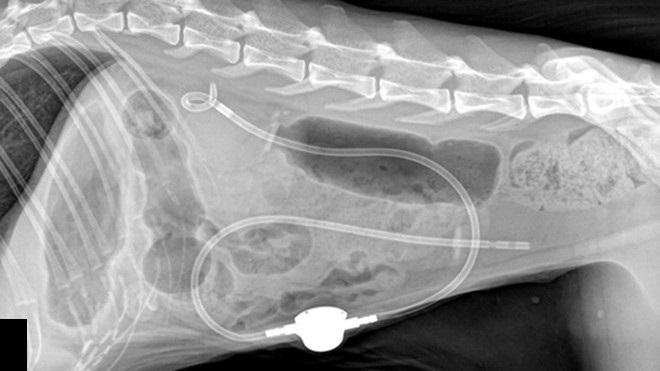
By: Krista Adamovich, DVM, DACVS-SA
Subcutaneous ureteral bypass (SUB) devices are used to alleviate ureteral obstructions in our feline and canine patients. The most common indications for their placement are ureteroliths, ureteral strictures, and neoplastic processes that obstruct the ureterovesicular junction. The device consists of a polyurethane catheter (6.5 French) that is composed of a locking-loop nephrostomy catheter, a multifenestrated cystotomy catheter, and a metallic shunting port that connects the catheters in the subcutaneous space. Surgical placement is performed with intra-operative fluoroscopic assistance. SUBs offer long-term patency by bypassing the obstructed ureter, allowing urine to flow from the nephrostomy catheter, through the subcutaneous port, and towards the bladder via the cystotomy catheter. These devices have successfully been used in small animal patients during this past decade with high success rates when placed by surgeons with appropriate training and experience. Advantages include the ability to flush the system to maintain patency and the ability to directly culture from the renal pelvis in the future if needed. With experience, they can also be placed with shorter anesthetic times than some traditional alternative therapies for ureteral obstructions and therefore may lower mortality rates. SUBs offer an alternative option to traditional therapies when there is a high risk of failure or re-obstruction. Complications, although uncommon, consist of leakage of the nephrostomy/ cystotomy tube or shunting port, hemorrhage during nephrostomy tube placement, system occlusion with blood clots, debris or stones, kinking of the catheter during placement, and urinary tract infections.


